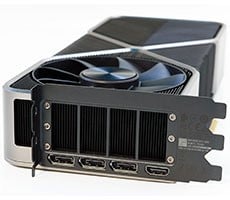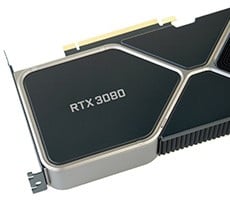NVIDIA SLI & ASUS A8N-SLI Deluxe Performance Showcase
Introduction & Hardware Specifications
There's a certain allure in being able to make the claim that you can double the performance of anything. All too often, overzealous marketing campaigns in the high-tech field have made a "theoretical" claim of this sort, all the while falling well short in real-world performance metrics. The PC graphics industry has had its hand at blurring this line, as well, but the last new architecture launches from both NVIDIA and ATi have in many cases actually delivered on this bold statement as compared to their respective previous-gen product offerings.
Another way you can make this claim without totally having to sling the snake oil is to pair up two of your latest and greatest products in tandem. In the case of processors, parrallel-processing techniques have also offered this 2X performance hope with the caveat that you'll most likely need the software behind them to support a multiprocessing architecture.
A couple of weeks back, during the Thanksgiving holiday break here in the United States, NVIDIA and ASUS teamed together and kitted up the first few sets of SLI- (Scalable Link Interface) capable motherboards and graphics cards that take advantage of NVIDIA's new nForce4 - Athlon 64 chipset. Powered by dual PCI Express GeForce 6 series graphics cards, does NVIDIA have the ability to make 1 + 1 = 2? Well, just as with most types of parrallel-processing techiniques, it really depends on the software or game you are running, in this case. However, our experience with NVIDIA's new breed of SLI indicates that it's a great start in the right direction. In the pages ahead we'll show you where SLI can offer substantial performance gains and even some senarios where it doesn't.
|
| Support for the latest AMD Opteron, Athlon 64, and Sempron Processors 20 Lanes of PCI Express Connectivity ·_nForce4 SLI features 20 configurable lanes ** SLI-enabled boards are set up in two X8 Graphics ports and three single X1 lanes ·_nForce4 and nForce4 Ultra feature 20 fixed lanes (one x16 and three x1 lanes) Asynchronous Bus Architecture ·_AGP/PCI Lock allows easier tweaking of the CPU 1GHz HyperTransport Technology Link ·_1GHz HyperTransport link that is 16 bits wide to offer 8GBps of peak throughput Expansive Storage Features ·_Support for SATA 3Gbps ·_Four SATA ports and two PATA ports (each of which supports two drives) ·_Twin SATA controllers for improved performance with multiple drives ·_Support for RAID 0, 1, and 0+1 ·_Support for RAID Morphing ·_RAID supported across SATA and PATA controllers |
Networking and Security ·_nForce4 SLI and nForce4 Ultra feature Secure Networking Engine ·_Native Gigabit Ethernet ·_NVIDIA Firewall 2.0 nTune Performance Utility ·_Automatic performance tuning ·_Safe state recovery ·_GPU Overclocking
|

At the heart of the nForce4 chipset is PCI Express serial switching technology that provides dedicated bidirectional links to the CPU, DRAM, and other system resources. In tradtional PCI Express chipset architectures, a single X16 (or 16 lane) graphics slot provides a host for a PCI Express graphics card and there are three to four single 1X links provided for add-on card expansion. The nForce4 chipset, however, allows those 16 lanes for graphics to be configurable into a two-slot X8 architecture. Beyond that, the rest is pretty straightforward. All of the recent advances in I/O, storage and network connectivity technology are brought forth in nForce4, including Gigabit Ethernet, Serial ATA for storage, and USB 2.0. For additional information on the NVIDIA nForce4 chipset, please see our showcase article here.









